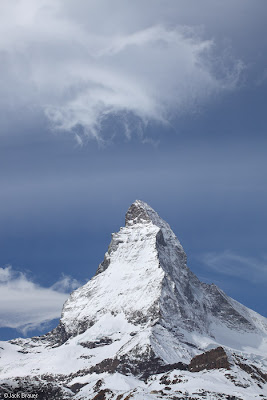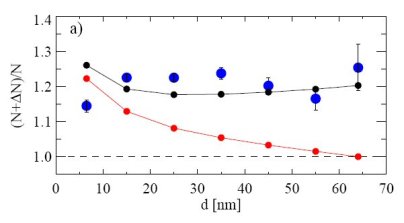As promised here is part two of Professor Easterbrook's response (via WUWT):
More fatal flaws in the Shakun et al. Nature paper claiming that CO2 preceeded late glacial warming [Part 2]
By Dr. Don Easterbrook
In Part 1 , I posed 11 questions related to underlying assumptions and misconceptions that form the basis for the paper “Global warming preceded by increasing carbon dioxide concentrations during the last deglaciation by Shakun et al. (Nature 2012) and discussed the first five questions related to the authors claim to have “compelling evidence that rising CO2 caused much of the global warming” and that “the CO2 change slightly preceded much of the global warming, and this means the global greenhouse effect had an important role in driving up global temperatures and bringing the planet out of the last Ice Age.”
Part 1 discussed problems related to the lack of direct dating of the Antarctic ice cores and the difficulty of accurately measuring CO2 in ice cores. In Part 2, we will look at the validity of the authors’ claims that (1) climate changes in Antarctica were out of phase with global climatic changes and Southern Hemisphere climatic changes have a ‘see-saw’ relationship with the Northern Hemisphere. These contentions are central to the whole theme of the paper. We’ll also have look at the Greenland ice cores as proxies for global climate change, the AMOC forcing as the only causal mechanism for climate change, why orbital forcing doesn’t work for the abruptness of climate changes, and if we make through all of that, we’ll look at some other causal mechanisms that the Shakun et al. paper casually dismiss.
As shown in Part 1, the lack of direct dating of Antarctic ice cores resulted in reliance on theoretically modeled, wiggle-curve correlations age estimates that are essentially just best guesses, not accurate measurements. How can we check the validity of the Antarctic ice core ages used in the paper? The nearest places to Antarctica where well-dated climate chronologies exist are New Zealand and southern South America. If the Southern Hemisphere is indeed out of phase with the Northern Hemisphere (the ‘see-saw’), we should see it also in the chronologies of New Zealand and South America. Let’s see how they compare with the Antarctic chronology. Two specific periods of climate change can be compared: (1) a late phase of the LGM ~17,000 years ago, and (2) the Younger Dryas 12,700 to 11,500 years ago. If the basic contentions of the Shakun et al. paper are correct, the chronology of these two climatic phases in Antarctic, New Zealand, and South America should be out of phase with the chronology of similar phases in the Northern Hemisphere.
New Zealand and Patagonia at the last glacial maximum
A well-defined, well dated set of glacial moraines marking the last glacial maximum enclose Lake Pukaki in the Southern Alps of New Zealand (Figure 1). Seven Beryllium 10 (10Be) age measurements of boulders on the terminal moraines average 17,400 years old (Schaefer et al., 2006; Easterbrook, 2011).
10Be dates from moraines at Lake Pukaki, Glacial and pollen chronology from the
New Zealand. (Schaefer et al., 2006) southern Lake District of Chile.
LGM moraines and pollen from bogs in the Lake District of southern Chile have been extensively 14C dated. The average ages show an LGM at 17,400 years ago. LGM moraines surrounding Lago Buenos Aires in Patagonia have been 10Be dated at 16,000 and 18,800 years old (Kaplan et al., 2004).
Nineteen 10Be ages measured from boulders on moraines in the Tasmanian highlands of SE Australia range from 19,100 on terminal moraines to 15,oo0 on recessional moraines with a mean of 16,800 years. (Barrows et al., 2001, 2002).
What these well-dated chronologies are telling us is that the LGM occurred at the same time in the both the Northern and Southern and Hemispheres, i.e., the hemispheres are not out of phase with one another.
The Younger Dryas chronology
An even better climate chronology can be found during the Younger Dryas in New Zealand, which can be compared to the Antarctic YD chronology to test the Shakun et al. contentions. At least two phases of the Younger Dryas can be identified in both the Northern and Southern Hemisphere, making the YD an excellent test of whether or not the YD was synchronous in both hemispheres or was out of phase (as contended by Shakun et al.).
Southern Alps, New Zealand
New Zealand has a well-established Younger Dryas chronology at multiple localities in the Southern Alps. The YD double–moraine pattern is found in the glacial chronology at at Birch Hills along Lake Pukaki, Arthur’s Pass, Prospect Hills, Waiho Loop, and at several other localities. At Birch Hills ~40 km upvalley from the Lake Pukaki LGM moraines, 5 10Be dates from the outermost Birch Hills moraine average 12,800 years old and 4 10Be dates from the inner moraine average 11,200 years old. Another pair of YD moraines at Arthur’s Pass show a mean 10Be age of 11,800 years for the outermost YD moraine and 11,400 for the inner moraine. A YD moraine at Prospect Hills yielded 10Be dates of 12.7 and 12.8 years B.P. (Easterbrook, 2002, 2011).
On the west coast of South Island, wood in the Waiho Loop moraine, deposited by the Franz Josef Glacier about 20 km behind the LGM moraine, has been dated at 11,200 14C years (equivalent to a calendar year age of slightly less than 13,000 years). (Mercer, 1982, 1988; Denton and Hendy, 1994).
Ages of Younger Dryas moraines in the Southern Alps of New Zealand.
Ages of inner and outer YD moraines at Birch Hills in the Southern Alps.
Younger Dryas chronology in the Northern Hemisphere
At least two phases of the Younger Dryas are also well documented in the Northern Hemisphere at many localities in North America, the European Alps, Scandinavia, and eastern Europe. The chronology of these climatic events is well dated by radiocarbon. This provides the opportunity for comparison with the double phases of YD glaciation found in New Zealand and elsewhere. The double YD phases are found both in the record of continental ice sheet glaciation and in the alpine record.
Alkenone SST measurements from marine cores west of Vancouver Island indicate a temperature drop of ~3° C during the YD (Kienast and McKay, 2001). Cool-water foraminifera, suggesting YD cooling, have been found on the British Columbia shelf and in the Santa Barbara Basin. Cooling during the YD is also shown from pollen records in SW British Columbia, NW Washington, Oregon, and SE Alaska. The ages of multiple YD moraines of the Pleistocene Cordilleran Ice Sheet in NW Washington have been established by more than 100 radiocarbon dates at between 11,500 and 12,700 years old.
[A] Reconstruction of the YD phase of the [B] Ages of the double YD moraines of the
Cordilleran Ice Sheet in NW Washington Scandinavian Ice Sheet. Ages shown are 14C ages
11,500 and 12,700 years ago. equivalent to 11,500 and 12,700 years ago.
Alpine Glaciers
Dated YD moraines occur in the Wind River Range at Titcomb Basin and Temple Lake, and similar, moraines occur throughout the Rocky Mts. What is apparent from these examples of YD moraines is that not only was the YD climatic event recorded by alpine glaciers in western North America, but in many places double moraines record a dual YD climatic change.
Cirque glaciers expanded twice during the YD at Titcomb Lakes in the Wind River Range, WY. Erratics on moraines and glaciated bedrock ~33 km upvalley from LGM moraines at Freemont Lake, Wyoming, have been 10Be dated between 12,300 and 10,600 years old Birkeland, 1974; Zielinski and Davis, 1987; Davis, 1988; Davis and Osburn, 1987).
Double Younger Dryas moraines at Titcomob Ages of YD moraines in the Rocky Mts., ID
Lakes in the Wind River Mts., WY.
Cirque moraines at multiple elevations in the Sawtooth Range of Idaho also record two YD climatic events. Bench Lakes, north of Redfish Lake, consist of several glacial lakes at successively higher elevations, representing sequentially rising YD snowlines. The 10Be ages of boulders from range from 11,700 to 11,400 years. Thus, at least two phases of moraine building took place here during the YD.
Double, post–LGM moraines occur about 12 km upvalley from LGM moraines at Icicle Creek in the North Cascades of Washington. Boulders on the outmost YD moraine were 10Be-dated at 12,600 and 12,300 years and boulders on a younger YD moraine were dated at 11,300 and 11,900 years. All of the dates from the inner and outer moraines fall within the YD.
Double YD moraines occur at Julier Pass near St. Moritz, Switzerland and multiple YD moraines at Loch Lomond in the Scotish Highlands have been radiocarbon dated between 12,900 and 11,500 years old.
The Greenland GISP2 oxygen isotope record
The double phase of the Younger Dryas also appears in the Greenland GISP2 oxygen isotope record between 11,500 and 12,700 years ago, correlating very well with the global glacial record.
Double Younger Dryas event recorded in the GISP2 ice core
CONCLUSIONS
So what does all this mean and why is it important? The double nature of YD moraines in widely separated areas in both hemispheres suggests a common, global, climatic cause. The YD is characterized by two distinct moraines in widely separated parts of both the Northern and Southern Hemispheres and in the Pacific and Atlantic regions, indicating that the YD consisted of more than a single climatic event. This means that the twin YD cooling occurred virtually simultaneously globally and both ice sheets and alpine glaciers were sensitive to the dual YD cooling. The two YD phases in the GISP2 ice core confirm the globally synchronous climatic events. The global synchronicity of the late Pleistocene twin YD phases indicates a global atmospheric cause. The absence of a time lag between the N and S Hemispheres climatic fluctuations precludes an oceanic cause propagated from one hemisphere to the other. The sensitivity and synchronicity of worldwide climatic events with no apparent time lag between hemispheres means that abrupt climatic changes such as the YD were caused by simultaneous global changes.
So what does this mean about the validity of the contentions of Shakun et al. that the Northern and Southern Hemispheres were out of phase? Compare the age of the YD in their Figure 2 to the numerous YD chronologies from all over the world.
Shakun et al. Figure 2. The Red line is Antarctic temperature curve based on ice cores; the yellow dots are CO2 measurements from ice cores; the blue line is composite global temperature from 80 proxies.
The age of the YD shown on their Antarctic curve is from 13,000 to 14,700, nowhere near the age of the YD in New Zealand and the rest of the world. Considering the lack of adequate dating of the Antarctic ice cores and lack of correlation with New Zealand and global YD chronology, what this means is that their entire Antarctic curve is incorrect and needs to be shifted by nearly 2,000 years, taking with it the CO2 curve. This means that their entire argument for CO2 preceding warming during the last glaciation falls completely apart.
At this point, we haven’t yet gotten to issues with the AMOC, orbital forcing, or other possible causal mechanisms of climate change. Consideration of those issues would make this longer than most people would want to read at one sitting, so looks like they will have to await Part 3.
Once the third part is available I will post to it for those that are interested.
















































